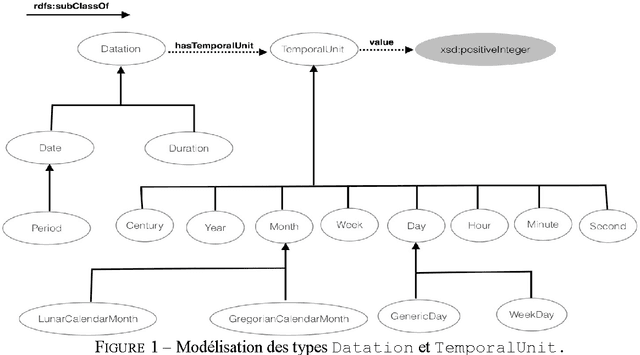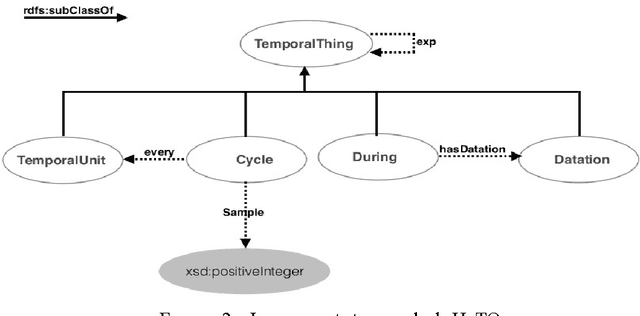Moussa Lo
UGB
Ontologies-based Architecture for Sociocultural Knowledge Co-Construction Systems
Apr 11, 2019


Abstract:Considering the evolution of the semantic wiki engine based platforms, two main approaches could be distinguished: Ontologies for Wikis (OfW) and Wikis for Ontologies (WfO). OfW vision requires existing ontologies to be imported. Most of them use the RDF-based (Resource Description Framework) systems in conjunction with the standard SQL (Structured Query Language) database to manage and query semantic data. But, relational database is not an ideal type of storage for semantic data. A more natural data model for SMW (Semantic MediaWiki) is RDF, a data format that organizes information in graphs rather than in fixed database tables. This paper presents an ontology based architecture, which aims to implement this idea. The architecture mainly includes three layered functional architectures: Web User Interface Layer, Semantic Layer and Persistence Layer.
HuTO: an Human Time Ontology for Semantic Web Applications
Jun 19, 2015

Abstract:The temporal phenomena have many facets that are studied by different communities. In Semantic Web, large heterogeneous data are handled and produced. These data often have informal, semi-formal or formal temporal information which must be interpreted by software agents. In this paper we present Human Time Ontology (HuTO) an RDFS ontology to annotate and represent temporal data. A major contribution of HuTO is the modeling of non-convex intervals giving the ability to write queries for this kind of interval. HuTO also incorporates normalization and reasoning rules to explicit certain information. HuTO also proposes an approach which associates a temporal dimension to the knowledge base content. This facilitates information retrieval by considering or not the temporal aspect.
OntoSOC: Sociocultural Knowledge Ontology
May 15, 2015



Abstract:This paper presents a sociocultural knowledge ontology (OntoSOC) modeling approach. OntoSOC modeling approach is based on Engestrom Human Activity Theory (HAT). That Theory allowed us to identify fundamental concepts and relationships between them. The top-down precess has been used to define differents sub-concepts. The modeled vocabulary permits us to organise data, to facilitate information retrieval by introducing a semantic layer in social web platform architecture, we project to implement. This platform can be considered as a collective memory and Participative and Distributed Information System (PDIS) which will allow Cameroonian communities to share an co-construct knowledge on permanent organized activities.
* 8 pages, 5 figures, 2 tables
 Add to Chrome
Add to Chrome Add to Firefox
Add to Firefox Add to Edge
Add to Edge